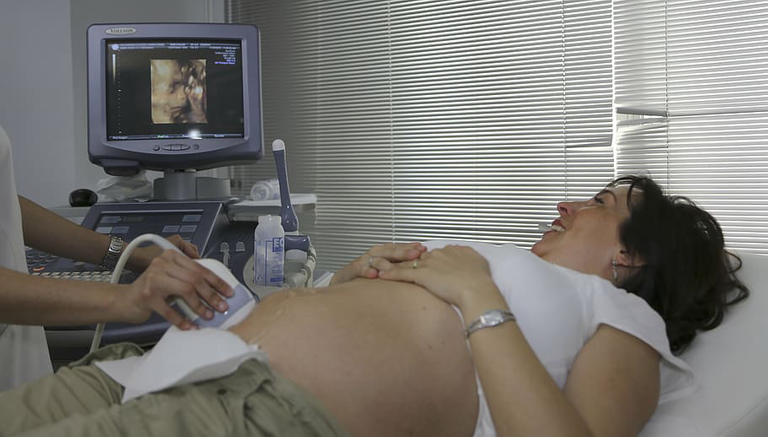The Infertility in women
Infertility has been a major health-related issue facing couples that actually affects their wellbeing. In every six couples, one faces the problem of infertility. A diagnosis is given to a couple that has been unsuccessful in conceiving over an interval of one full year.
When the cause is the female partner, it is called female infertility. Infertility in women accounts for approximately 50% of all infertility cases and also accounts for approximately one-third of all infertility cases. Therefore, it is a disease in which the ability to conceive is impaired.
Symptoms and causes
What lead to infertility in women? Many factors can lead to infertility, such as problems related to the uterus. This covers any growths inside the uterine cavity, such as poluyiuys or septa, adhesions, and fibroids. Some of the complications are from birth (inborn), such as the septum, whereas others, such as polys and fibroids, may occur on their own at any moment. When some procedures are carried out, like dilation and curettage (D&C), adhesions may develop, resulting in issues in the fallopian tubes.
Infertility due to some factors is commonly caused by a pelvic inflammatory illness, which is typically brought on by gonorrhea and Chlamydia. Another factor is an issue with ovulation. There are numerous causes for a woman's irregular ovulation. Ovulation can be impaired by different factors, such as pituitary tumors, prior eating disorders, thyroid issues, substance addiction, and extreme stress. Also factoring in problems associated with egg quality and quantity is the fact that most women are born with the most eggs they will ever have, and this supply can be consumed before menopause. Moreover, some eggs will have the wrong chromosome number and cannot fertilize or grow into healthy fetuses.
Risk factors associated with infertility
Many factors can enhance a woman’s risk of female infertility. General health conditions, genetic (inherited) traits, age, and lifestyle can all contribute to female infertility. Specific factors can be Obesity, abnormal menstrual cycle, age, Hormone issue that stops ovulation, Having a low-fat content from extreme exercise, Being underweight, Endometriosis, uterine fibroids, Structural problems (problems with the fallopian tubes, uterus, or ovaries), Tumors, cysts, Excessive substance use (heavy drinking) and smoking, Primary Ovary Insufficiency (POI), Autoimmune Disorders (Lupus, Rheumatoid Arthritis, Hashimoto’s disease, thyroid gland conditions), Sexually Transmitted Infections (STIs), Polycystic Ovary Syndrome (PCOS), etc.
Diagnosis and Tests
The patient must notify the doctor of her menstrual cycles, pelvic pain, miscarriages, and unusual vaginal bleeding or discharge. Also, the patient can be questioned about any past pelvic infections or STIs. Some questions might be: Is your menstrual cycle regular and pain-free, or is it irregular and painful? Do you experience unusual discharge or heavy bleeding? Have you had any abdominal surgeries in the past?
Have you ever been pregnant or miscarried before? After a physical examination, the health care provider might perform some tests, which include an examination of the pelvis and ultrasonography of the womb, a pap exam, and a check to see whether there is any milk output in the breasts. Additional lab tests can be conducted, which include blood testing, prolactin level, laparoscopy to check organs by placing the laparoscope in the belly, tests of the ovarian reserve, thyroid function, transvaginal ultrasound, and x-ray hysterosalpingography (HSG).
Management and Treatment
Infertility treatment depends on the underlying cause. For example, hormonal medicine may be used to treat disorders such as thyroid difficulties or ovulation problems, whereas surgery may be used to correct structural abnormalities. Other methods include in vitro fertilization, which involves fertilizing eggs with sperm in the lab to produce an embryo, followed by the transfer of the embryo to the uterus. By also using artificial insemination, which involves injecting washed sperm into the uterus after ovulation.
Prevention
Most infertility challenges cannot be avoided. It is possible to reduce the risk factors related to it. For example: adjusting one's lifestyle to reduce smoking and alcohol intake, improving personal hygiene, and forming good exercise habits may help one's fertility. Regular checkups with doctors are advisable when the body's systems are challenged.
Conclusion
Infertility is commonly understood to be the inability to conceive after one year of unprotected sex. Some healthcare providers assess and treat women aged 35 or older after six months of unproved sex because it is known that women's fertility declines steadily with age.
References
@ClevelandClinic. “Female Infertility: Causes, Risk Factors, Tests and Treatment.” Cleveland Clinic, my.clevelandclinic.org/health/diseases/17774-female-infertility. Accessed 6 June 2023.
“What Are Some Possible Causes of Female Infertility?” https://www.nichd.nih.gov/, 31 Jan. 2017, www.nichd.nih.gov/health/topics/infertility/condition info/causes/causes-female.
“Infertility | Office on Women’s Health.” Infertility | Office on Women’s Health, 22 Feb. 2021, www.womenshealth.gov/a-z-topics/infertility.
“Infertility | CDC.” Infertility | CDC, 26 Apr. 2023, www.cdc.gov/reproductivehealth/infertility/index.htm
“Causes of Infertility - NHS.” nhs.uk, www.nhs.uk/conditions/infertility/causes. Accessed 6 June 2023.
“What Are Some Possible Causes of Female Infertility?” https://www.nichd.nih.gov/ www.nichd.nih.gov/health/topics/infertility/conditioninfo/causes/causes-female.
“Infertility.” Infertility, 3 Apr. 2023, www.who.int/news-room/fact-sheets/detail/infertility.
